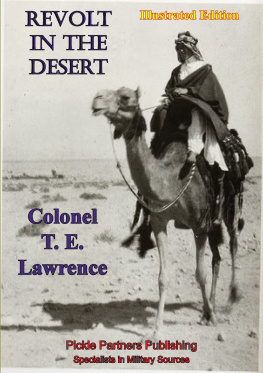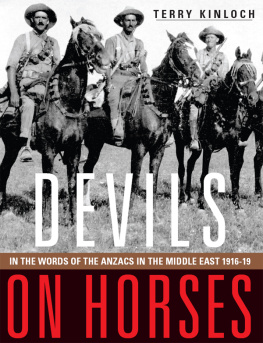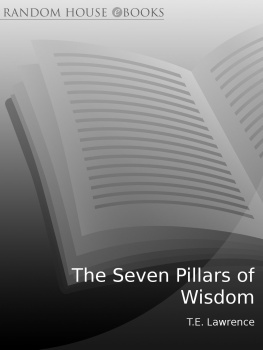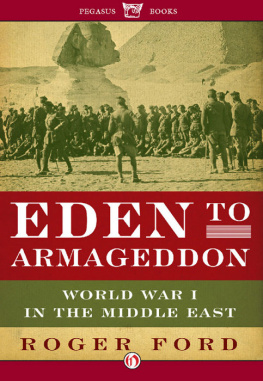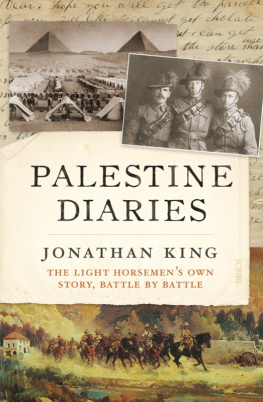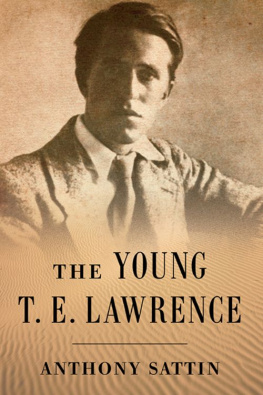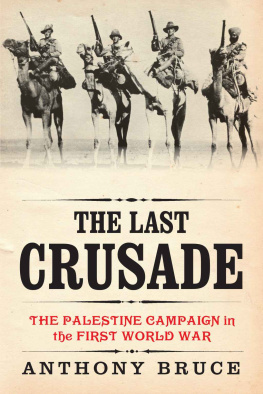

Copyright 2016 Neil Faulkner
All rights reserved. This book may not be reproduced in whole or in part, in any form (beyond that copying permitted by Sections 107 and 108 of the U.S. Copyright Law and except by reviewers for the public press) without written permission from the publishers.
For information about this and other Yale University Press publications, please contact:
U.S. Office:
Europe Office:
Typeset in Minion Pro by IDSUK (DataConnection) Ltd
Printed in Great Britain by Gomer Press, Llandysul, Ceredigion, Wales
Library of Congress Cataloging-in-Publication Data
Names: Faulkner, Neil, author.
Title: Lawrence of Arabias war : the Arabs, the British, and the remaking of the Middle East in WWI / Neil Faulkner.
Description: New Haven : Yale University Press, 2016. | Includes bibliographical references and index.
Identifiers: LCCN 2015048301 | ISBN 9780300196832 (cloth : alk. paper)
Subjects: LCSH: World War, 19141918CampaignsMiddle East. | Lawrence, T. E. (Thomas Edward), 18881935. | Middle EastHistory19141923.
Classification: LCC D568.4.L45 F38 2016 | DDC 940.4/15dc23
LC record available at http://lccn.loc.gov/2015048301
A catalogue record for this book is available from the British Library.
10 9 8 7 6 5 4 3 2 1
CONTENTS
MAPS AND ILLUSTRATIONS
Maps
Illustration credits
Plate 1 is photographed by Harry Chase, 1917, 2005 TopFoto. From T.E. Lawrences Seven Pillars of Wisdom, subscribers edition, 1926, the following images (artists names follow in parentheses): plate 5 left (W. Nicholson), right (Augustus John) and bottom (William Roberts); plate 6 bottom right (Eric Kennington); and all three images on plate 7 (Eric Kennington). Plate 6 top of the Emir Feisal is by Augustus John, 1919 Ashmolean Museum, University of Oxford (WA1936.30). Plate 8 right of Sir Henry McMahon is by Walter Stoneman, 1920 National Portrait Gallery, London. Plate 11 top and plate 17 top are courtesy of the Imperial War Museum (Q58863 and Q59193). Plate 13 top is courtesy of the Huntingdon Library, San Marino, California. Plate 13 bottom is a photograph from Lt George Pascoes album, courtesy of John B. Winterburn. Plate 20 bottom left is by Eric Kennington at Clouds Hill, Dorset National Trust/R. Goldsmith.
NOTE ON THE TEXT
T HE TRANSCRIPTION OF foreign-language names is always problematic. I have avoided the somewhat pedantic academic practice of using a standardised system of transcription, since this is of little use to a general reader unfamiliar with the language in question. The matter, anyway, is hopelessly complicated by changing conventions, to the extent that arbitrary use of a modern standard can render some places referred to in the primary sources unidentifiable to the uninitiated.
Instead, in each case, I have adopted whatever form seemed most natural, both as it appears on the page and as a rough guide to pronunciation. I have, however, been wholly consistent in always using the same transcription for any particular name. Djemal Pasha is always Djemal, never Cemal or Jemal, and I have done this partly because this spelling was widely used in contemporary sources, partly because it more closely resembles the Turkish pronunciation.
Another problem arises in relation to place-names. Different names for the same place were sometimes used in the past, and these are often different from those in use today. I have generally opted for the names most commonly used in contemporary British military sources.
Military terminology is another source of difficulty. It is useful to know that an Ottoman regiment was the equivalent of a British brigade, and that both typically comprised three battalions. A battalion at full strength numbered about 1,000 men, but on campaign actual strengths tended to be far lower, in the case of the Ottomans very much so. Regiments/brigades were, of course, incorporated into divisions, corps and armies. In numbering these, I have followed the convention of using words for armies, Roman numerals for corps and Arabic numerals for divisions, brigades and battalions, as in Seventh Army, VIII Corps, 43rd Division, 130th Brigade and 3rd Manchesters.
In relation to occasional references to money, it is worth knowing that in 1914 a British pound was worth about US $3, a Turkish pound 50 cents and a German mark about 25 cents. I have rounded any figures used because values varied considerably in the course of the First World War.
I have modernised, standardised and corrected the punctuation in the quotes, and also standardised spellings, so that they are easier to read and do not jar.
ACKNOWLEDGEMENTS
T HANKS ARE DUE to a great number of people. Many Jordanians supported the Great Arab Revolt Projects nine annual seasons between 2006 and 2014. They include: King Abdullah, Prince Hassan, Prince Mired and the staff of the Royal Court; Dr Fawwaz al-Khraisha, Dr Ziad al-Saad, Dr Monther Jamhawi, Jihad Haroun, Hani Falahat, Khalil Hamdan, Aktham Oweidi, and Saata Massadeh of the Department of Antiquities; Jihad Kafafi of the Jordan Museum; Engineer Hussein Krishan of the Aqaba Railway; Dr Fawzi Abudanah, Dr Mansour Shqiarat, Dr Zeyad al-Salameen, Dr Saad Twaissi and colleagues at the University of Al Hussein bin Talal in Maan; Muhammad Twaissi and the staff of the Edom Hotel in Wadi Musa; and, not least, Salah Hassanat and all our local drivers. Mention must also be made of the valuable assistance given by Professor Bill Finlayson, Nadja Qaisi and the staff of the Council for British Research in the Levant, and by Bob Bewley and David Kennedy for use of their air reconnaissance photographs of southern Jordan.
An especially deep debt of gratitude is owed to the personnel of Bristol Universitys Great Arab Revolt Project (GARP). The core included the following: David Thorpe and Ali Baldry, with whom I conceived and planned the project on a recce to Jordan in 2005, the former then serving as site director, the latter as site photographer; Susan Daniels, our long-serving, ultra-efficient and exceptionally hard-working project administrator; John Winterburn, GARPs (official) landscape archaeologist and (unofficial) archive researcher; Cat Edwards and Anna Gow, responsible respectively for overall site supervision and overall finds processing; Roger Ward, the projects indispensable techie and metal-detectorist; and also Fizz Altinoluk (site supervisor), Angie and Dave Hibbitt (geophysicists), Odette Nelson (finds assistant), David Spencer (site supervisor) and Duncan Ward (site supervisor).
In addition, all of the following participated in one or more of GARPs field seasons: Linah Ababneh, Suzanne Auckerman, John Austin, Fabrice de Backer, Ali Baldry, Mohammad Bataineh, Peter Besler, Len Blasiol, Esther Breithoff, David Brown, Martin Burgess, Susannah Chapman, Richard Clayton, Lisa Corti, Nick Dawson, Neil Dearberg, Karen Deighton, Chrissie Eaves-Walton, Charles Eilers, Jo Gilbert, Michael Gill, Andrew Green, Fred Hay, Ian Heritage, Owen Humphrys, Caroline Jennings, Guy Jillings, Tim Johnson, Nick Kelly, Alice Kilroy, Erica Kratz, David Long, Bill Loughner, Alistair MacLellan, Ian McKenzie, Heinrich Natho, Phillip Naylor, Yvonne Neville-Rolfe, Simone Paturel, Kelly Pool, Brian Powell, John Raiswell, Mike Relph, Jerry Revell, Rob Riddett, Vicky Roads, Hilary Sanseverino, John Scott, David Shepherd, Paul Smith, James Stejskal, Bill Sutherland, Guy Taylor, Vronique Thvoz, Dennis Thompson, Barbara Wagner, Steve Walker, Roger Ward, Benjamin Wimmer, Jan Woolf and Zheng Xu.
Next page

